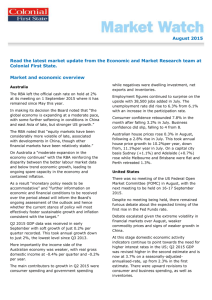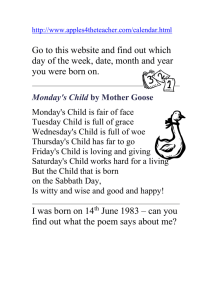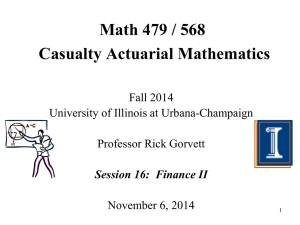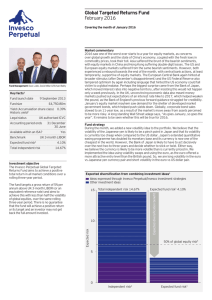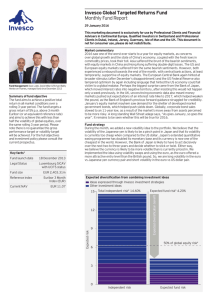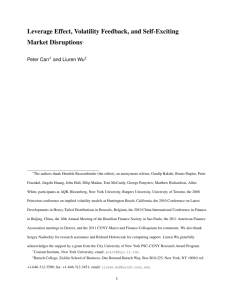Market update: volatile times
advertisement
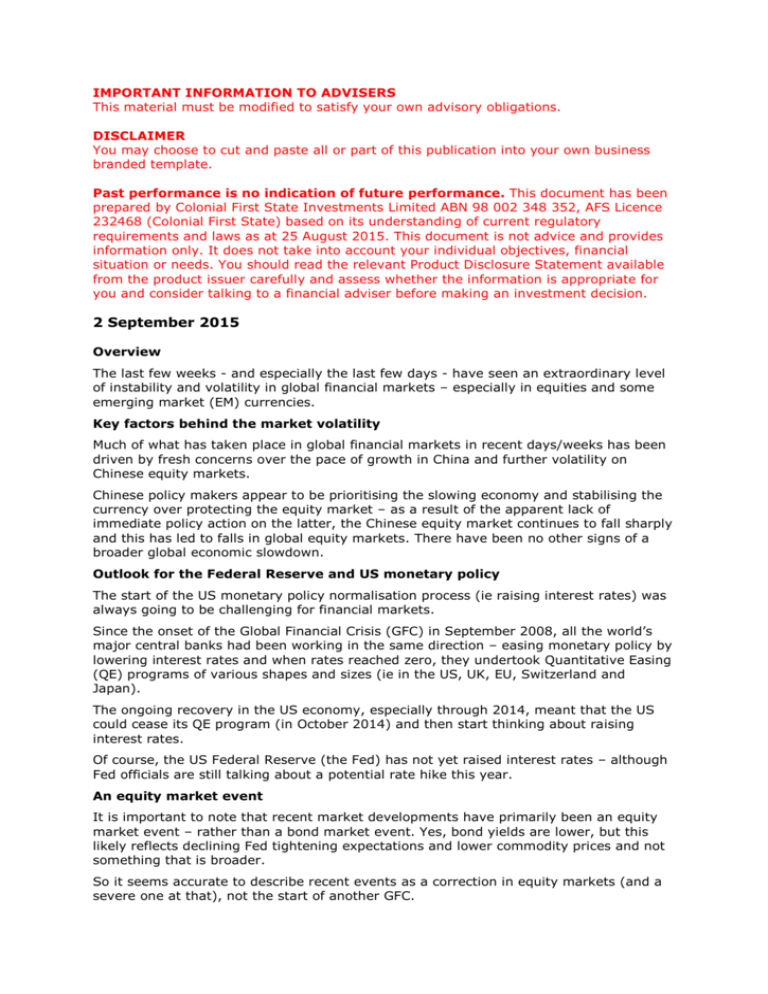
IMPORTANT INFORMATION TO ADVISERS This material must be modified to satisfy your own advisory obligations. DISCLAIMER You may choose to cut and paste all or part of this publication into your own business branded template. Past performance is no indication of future performance. This document has been prepared by Colonial First State Investments Limited ABN 98 002 348 352, AFS Licence 232468 (Colonial First State) based on its understanding of current regulatory requirements and laws as at 25 August 2015. This document is not advice and provides information only. It does not take into account your individual objectives, financial situation or needs. You should read the relevant Product Disclosure Statement available from the product issuer carefully and assess whether the information is appropriate for you and consider talking to a financial adviser before making an investment decision. 2 September 2015 Overview The last few weeks - and especially the last few days - have seen an extraordinary level of instability and volatility in global financial markets – especially in equities and some emerging market (EM) currencies. Key factors behind the market volatility Much of what has taken place in global financial markets in recent days/weeks has been driven by fresh concerns over the pace of growth in China and further volatility on Chinese equity markets. Chinese policy makers appear to be prioritising the slowing economy and stabilising the currency over protecting the equity market – as a result of the apparent lack of immediate policy action on the latter, the Chinese equity market continues to fall sharply and this has led to falls in global equity markets. There have been no other signs of a broader global economic slowdown. Outlook for the Federal Reserve and US monetary policy The start of the US monetary policy normalisation process (ie raising interest rates) was always going to be challenging for financial markets. Since the onset of the Global Financial Crisis (GFC) in September 2008, all the world’s major central banks had been working in the same direction – easing monetary policy by lowering interest rates and when rates reached zero, they undertook Quantitative Easing (QE) programs of various shapes and sizes (ie in the US, UK, EU, Switzerland and Japan). The ongoing recovery in the US economy, especially through 2014, meant that the US could cease its QE program (in October 2014) and then start thinking about raising interest rates. Of course, the US Federal Reserve (the Fed) has not yet raised interest rates – although Fed officials are still talking about a potential rate hike this year. An equity market event It is important to note that recent market developments have primarily been an equity market event – rather than a bond market event. Yes, bond yields are lower, but this likely reflects declining Fed tightening expectations and lower commodity prices and not something that is broader. So it seems accurate to describe recent events as a correction in equity markets (and a severe one at that), not the start of another GFC. Expect further policy easing in China While there is evidence of a slowdown in the Chinese economy, the Chinese authorities still have plenty of room to ease policy. Further interest rate cuts, reductions in the Reserve Requirement Ratio (which would allow the banks to lend more money) and further currency depreciation are all in play. Markets should expect further policy easing from the Chinese authorities in the days, weeks and months ahead. The other positive for markets is that although the Fed has ended its QE program and is expected to begin raising interest rates before year-end, both the European Central Bank (ECB) and the Bank of Japan (BoJ) are still undertaking aggressive QE programs and if anything, these asset buying programs could be increased in the months ahead. The scale of the ECB and BoJ QE programs will more than offset the end of the US QE program. Recent developments Here is the state of markets as of Wednesday 2 September at 9am Sydney time: After a sense of calm returning to markets in late August, there were once again heavy falls on Monday 31 August on global sharemarkets. This was led by some weaker economic data out of China, with official Manufacturing Purchases Managers Index falling to 49.7 from 50.0, a three-year low and as debate continues around the timing and pace of the first interest rate hike by the US Federal Reserve. The Shanghai Composite Index fell 1.2% in trading on Monday and is down 21% since falls started on 17 August 2015. The oil price has rebounded to $US45 after trading as low as $US38 a barrel on Tuesday 25 August. This was the lowest since 2009. The rebound has been helped by some signs of lower production in the US. Global equity markets continue to trade with volatility. The US S&P500 fell 3.0% on Monday after ending last week up 0.9% despite heavy falls early in the week. Overall the S&P500 fell 6.3% in August. On Monday the Dow Jones Index fell 2.8% after finishing last week up 1.1%. Bond markets have traded with relative calm; the 10-year government bond yield in the US is currently 2.15%, after recovering from 2%, which was reached on 24 August. There is currently around a 50% chance of the US Federal Reserve lifting interest rates on 17 September priced in, this has risen over the past week. European markets also have fallen on Monday, with the Euro Stoxx 50 down 2.5% on Monday after ending last week up 1.2%. The ASX200 fell 2.1% on Monday – after falling 8.6% in August. The AUD fell as a result of the weaker Chinese data and is currently trading at $US0.7010, its lowest level in six years and has been on a steady depreciation path for the past year. It is important to note apart from China there has been no signs of renewed economic weakness in the US, Europe or Australia. What does the market volatility mean for your investments? Accumulators: It’s time in the market, not timing the market, that’s important. So if you can ride out the volatile times, you could have a smoother return over the long term. Diversifying your investments can help to defend against volatility and reduce risks. You can diversify across a variety of investment options. It’s also important to manage your expectations. A slower global economic growth rate means a period of lower returns on traditional asset classes. Returns in the decade leading up to the recent Global Financial Crisis were abnormally high, so it’s important you don’t use these returns as the norm. It’s also a good idea to be aware of your own tolerance to risk so that you can assess new investment opportunities as they arise. So don’t be discouraged when you hear the word "volatile". Talk to your financial advisor today to see what type of action best suits your investment plan. Pre- and post-retirees: If you’re in retirement or nearing retirement, it is understandable you want to protect your investments. After all, your investment returns play a vital role in funding your retirement. In times of volatility it’s easy to react emotionally. But now is the time to keep a level head and stick to your long term investment strategy. Trying to time the markets and responding to every market movement could leave you considerably worse off. It’s a good time to speak to your financial adviser and remind yourself that markets do recover. Don’t let short-term volatility get in the way of your longer-term needs.
